This week, a quick look at our stop in Oatlands. Oatlands one of the line of villages between Hobart and Launceston along the main central highway. It dates back to the 1820s, when it was established as a military outpost. Modern Oatlands is a tourist destination, with many historic stone buildings lining the main street. A number of the original military buildings are now accessible as historic sites.
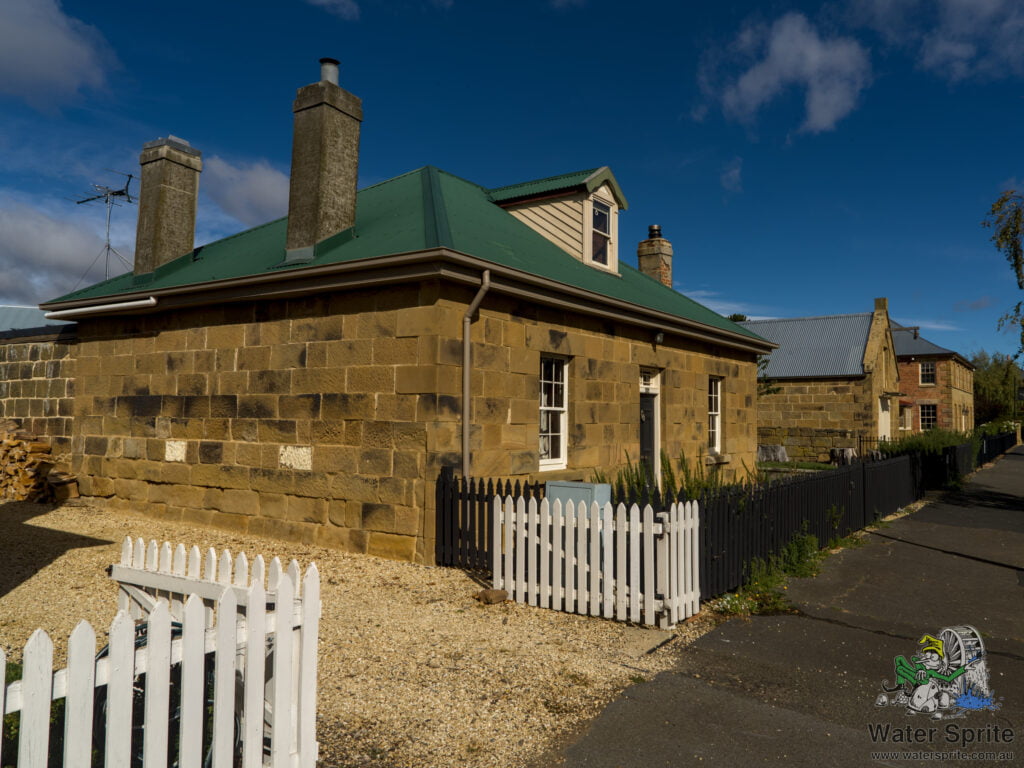
Sony A7Riv with Sony FE 24-70mm F2.8 GM II lens @ 24mm. 1/125s, f/20.0, 100 ISO.
Callington Mill
The mill was built in 1837, and produced flour until 1891. Railways had made long-distance transportation viable, and large centralised mills made small local mills uncompetitive. The mill internals burnt in 1913, leaving only the stone outer structure standing. During the 1970’s local community support saw various restoration efforts. External restoration was completed in 1999. It reopened as a fully functioning wind-powered flour mill in 2010, and milled flour for nearly 10 years before the Distillery (which now owns the site) again shut it down.
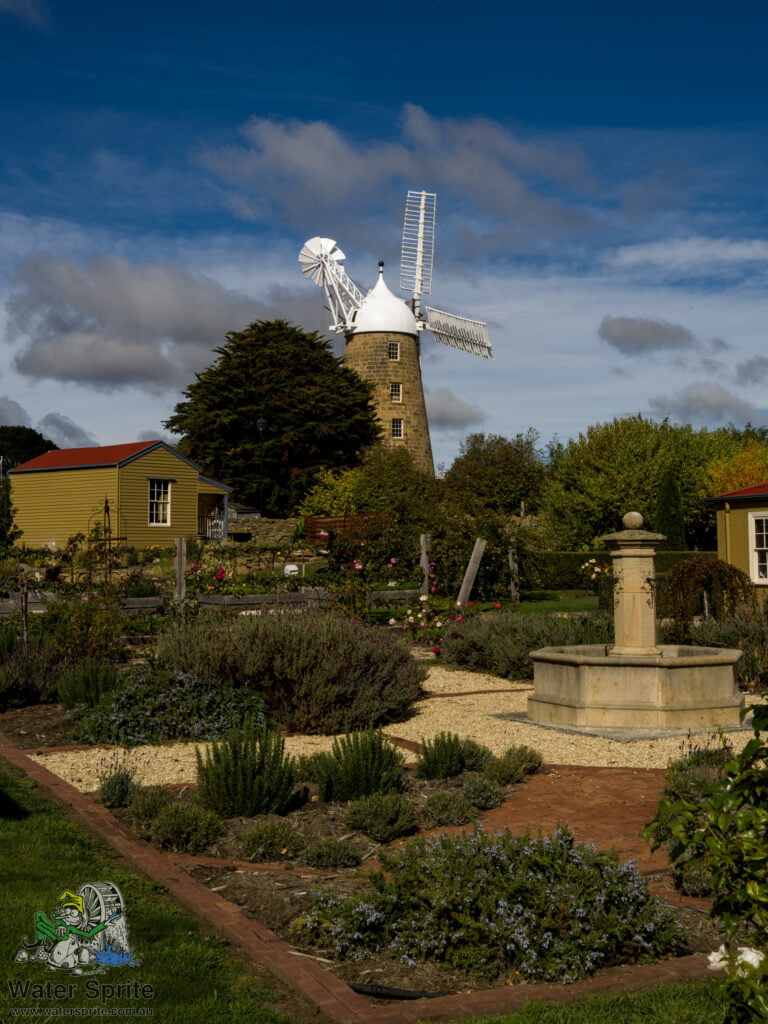
Sony A7Riv with Sony FE 24-70mm F2.8 GM II lens @ 41mm. 1/80s, f/20.0, 100 ISO.
The Site
The Distillery, which we didn’t visit, occupies one side of the site. It is a modern building, but with some style. I couldn’t decide on a good place to photograph it from, so no photo of it. In addition, a number of original buildings from the time of the Mill are still on site. There is a residence which didn’t appear to be open for tourists, which I think contains offices for the Distillery. The other buildings around the site had informational signage about their history and use.
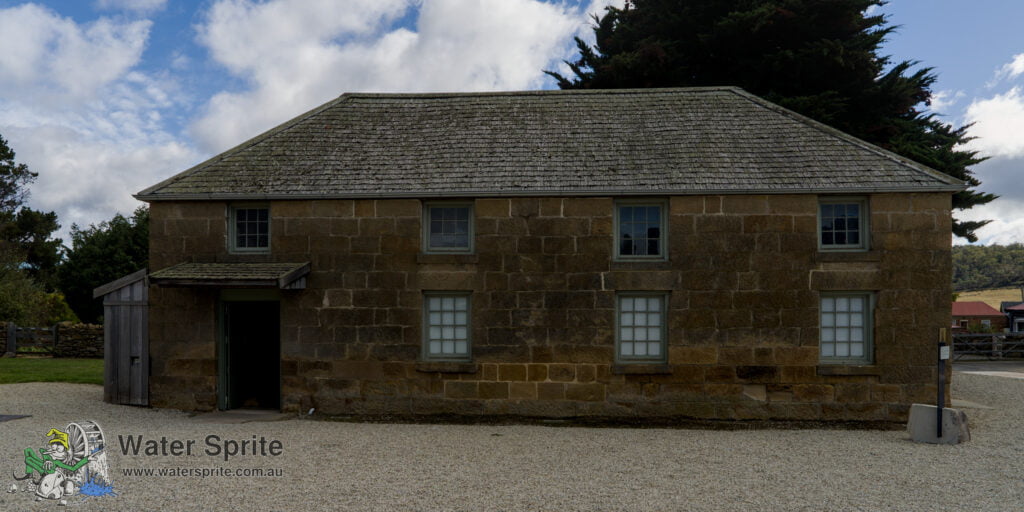
Sony A7Riv with Sony FE 24-70mm F2.8 GM II lens @ 24mm. 1/40s, f/16.0, 100 ISO.
The granary used to store the grain before it went through the mill, and now contains a video presentation on the history of the mill and the characters involved in its development. The stables are also open to view, but don’t contain much. There were presentations on screens in there too, but they didn’t leave much of an impression on me and I don’t remember what they were about. Part of the blacksmith’s cottage was also open for viewing as well. Very cosy accommodation… I didn’t get a photo that really conveyed the feeling from the blacksmiths cottage.
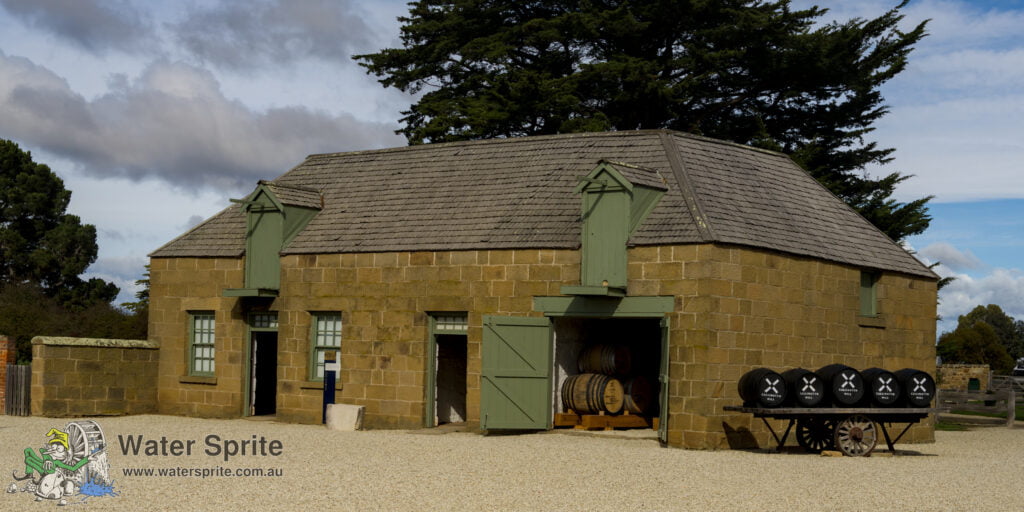
Sony A7Riv with Sony FE 24-70mm F2.8 GM II lens @ 50mm. 1/125s, f/16.0, 100 ISO.
The Mill
Finally, the mill itself was open. One of very few operational windmills of it’s type in Australia, and it has been restored in a very authentic manner. Only the ground floor is accessible and I presume that is because there are moving parts and narrow spaces higher up the mill that would not be safe for public access. The vanes were actually rotating and the mill was “working” although it does not mill anything anymore. The former miller was there and was able to give us a bit more of the story of the mill and how it worked. The mill is apparently still in perfect working order, and he has to be on site to monitor it because an unexpected wind gust could make it spin uncontrollably and damage things. He was very informative.
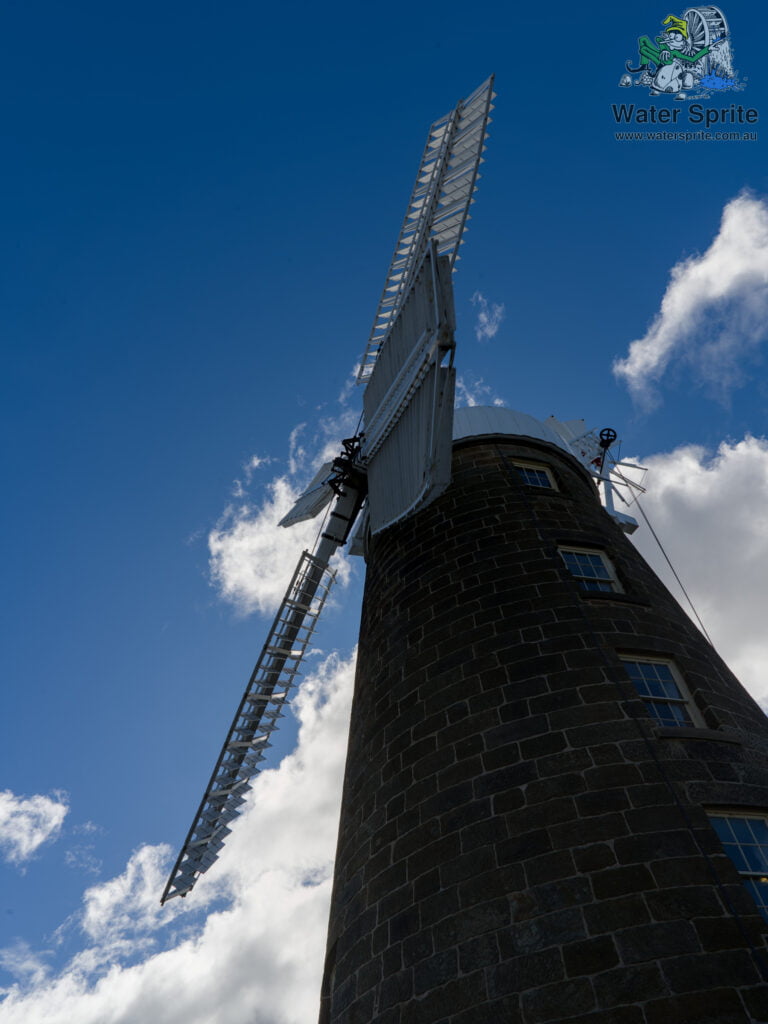
Sony A7Riv with Sony FE 24-70mm F2.8 GM II lens @ 24mm. 1/60s, f/16.0, 100 ISO.
The Military Precinct
Oatlands initially served as a military base and convict depot to support the inland development of Van Diemen’s Land. They reserved the central part of the modern town as a military precinct and built various government buildings for this part of the colony. Envisioned as the regional “capital,” the buildings were constructed with that purpose in mind.
For a small deposit, you can obtain an access key from various locations in Oatlands to enter several buildings that remain from the former military precinct. One of these locations is the grand Midlands Council Chambers building on High Street.
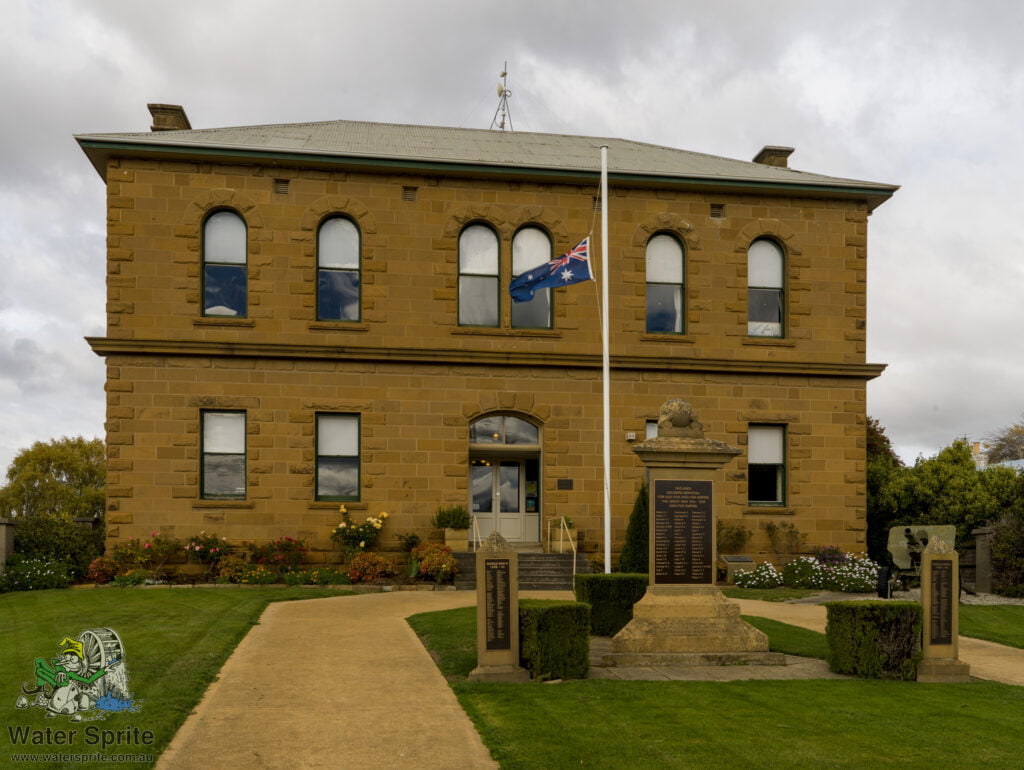
Sony A7Riv with Sony FE 24-70mm F2.8 GM II lens @ 28mm. 1/50s, f/16.0, 100 ISO.
The Commissariat Store
The Commissariat Store was the (guarded) storehouse for food and other supplies for the military in Oatlands. Petty (and not so petty) theft was rife in the early colony, and the military very quickly decided that they needed to keep their supplies under lock, key and guard. The Commissariat Store was the location for that.
About half of the commissariat store building is accessible for tourists. It includes a lot of information about the Black War, and early settlement of what is now known as Tasmania. The back part of the building houses a local community group (with apologies, I don’t remember which one). While it is good that the building is in use, it us unfortunate for photographic purposes that they have a car park in front of the building. It wasn’t possible to get a photo without the car adorning the shot.
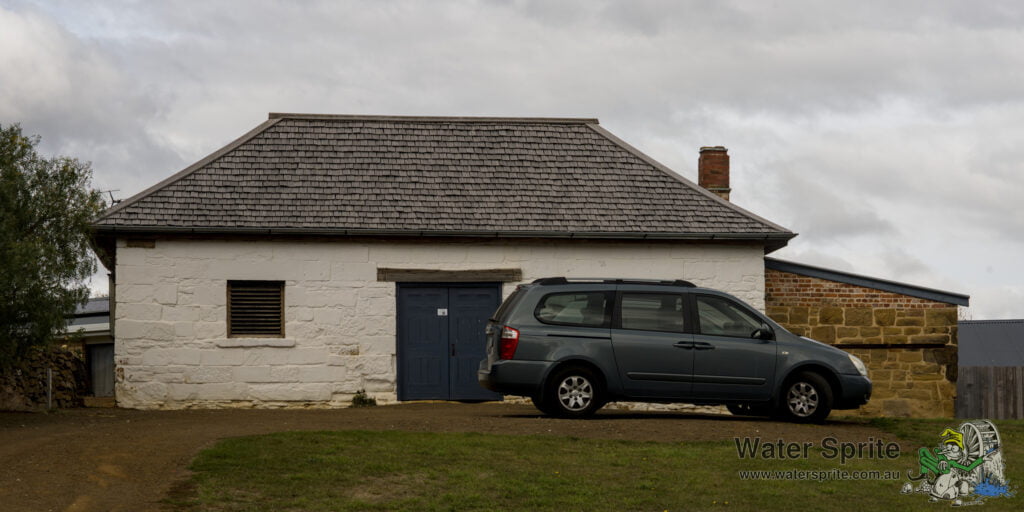
Sony A7Riv with Sony FE 24-70mm F2.8 GM II lens @ 70mm. 1/80s, f/16.0, 125 ISO.
History
In modern times, the building stands at the back of a block of land, with an artist’s gallery and studio located at the front. There used to be a guard house associated with the commissariat store nearby. I wonder if they demolished it when constructing the retail building at the front of the block, or incorporated it into the new structure.
The building, like most from this era, has served many purposes over the years and eventually became a bakery. The unpainted stone and brick addition on the side houses the wood-fired bakery oven installed at that time. They manufactured the current oven surrounds in Melbourne, probably in the late 1800s. This addition likely occurred after the building’s retirement from military use.
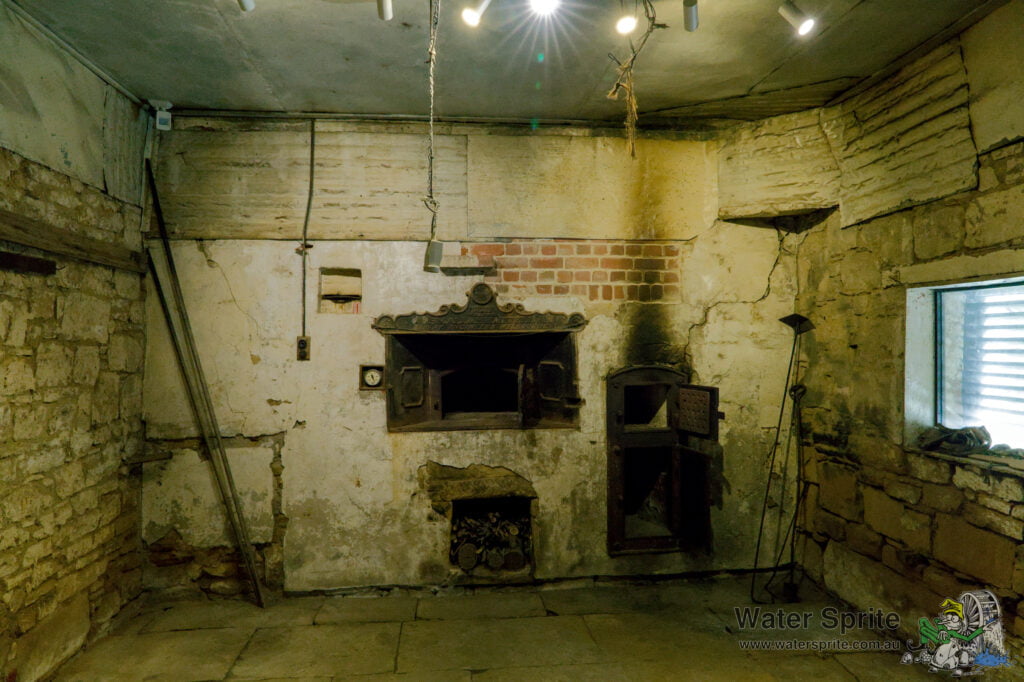
Sony A7Riv with Sony FE 24-70mm F2.8 GM II lens @ 24mm. 1/25s, f/16.0, 12800 ISO.
Oatlands Gaol
What a gaol it was
The Oatlands Gaol was constructed in the 1830’s as the largest regional gaol in the colony. It was intended to be an impressive penal structure suitable for what was envisaged to be the capital of the midlands of the colony. It had stone walls 10m high, and reports suggest it was a visible landmark anywhere in the town.
As a gaol associated with the Supreme Court, it was the only gaol outside of Hobart and Launceston that conducted executions (since the 1820’s in any case). Eighteen people were executed here (by hanging) between the 1840’s and 1860’s. Originally, executions occurred outside the main gate in full public view. However by the mid-1850’s that was considered not ideal, and a new gallows was constructed inside the gaol. Hangings at the gaol ceased in the 1860’s.
Almost all of the 18 death sentences were for offences that are still considered serious today. Mostly for murder or attempted murder, but also a rape; a carnal knowledge of a minor; and an armed robbery. I say almost all, however, because one stood out to me. One John Phillips was sentenced to death for having set fire to some haystacks. Poor Mr Phillips chose the wrong haystacks to set alight, as they were the haystacks of a local magistrate. The details are not described, but evidently said magistrate was able to persuade the Supreme Court that this was an offence that warranted the death penalty. Wikipedia suggests that this followed the magistrate convicting Mr Phillips for sly grog sales.
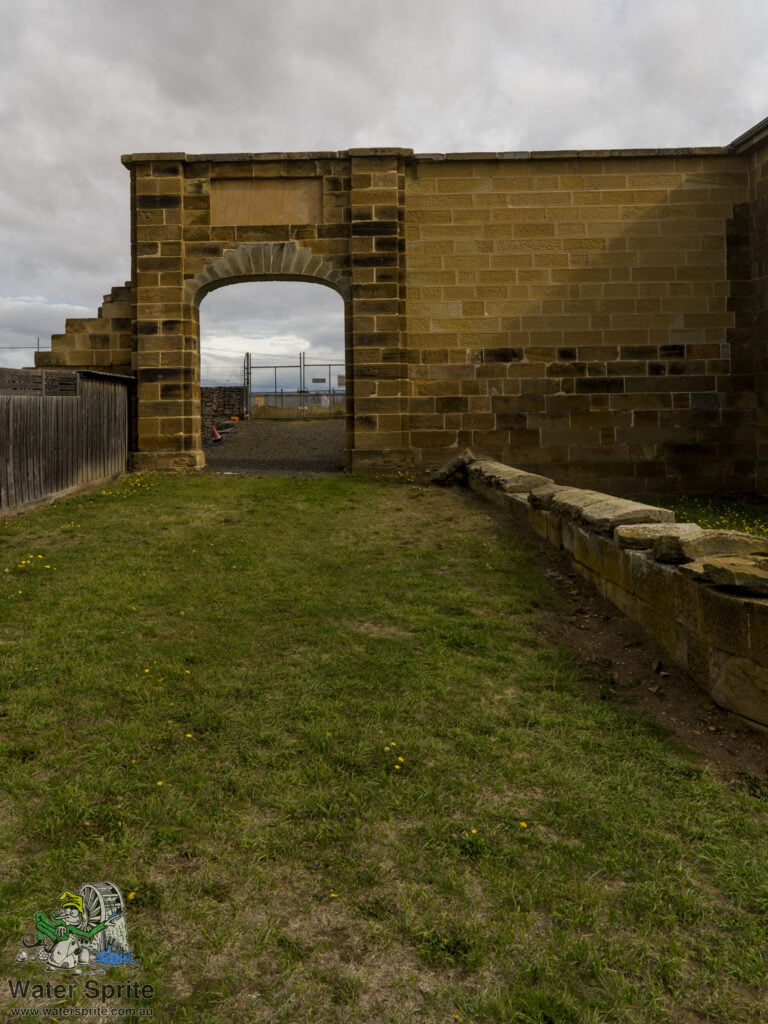
Sony A7Riv with Sony FE 24-70mm F2.8 GM II lens @ 24mm. 1/60s, f/16.0, 100 ISO.
Post gaol existence
By the late 1800s, the Oatlands Gaol had largely outlived its purpose, with prisoner populations dropping to less than 10% of its capacity. Its exact closure date as a gaol remains unclear. In the 1930s, workers reduced most of the gaol walls in height or demolished them, leaving only some reduced-height walls and the gaoler’s residence standing. Although the gaoler’s residence is supposed to be accessible, the access key mechanism was broken during our visit, preventing us from viewing the interior. This was unfortunate, as site documentation indicates that some archaeological digs have taken place around the gaol precinct, with the finds documented and displayed inside.
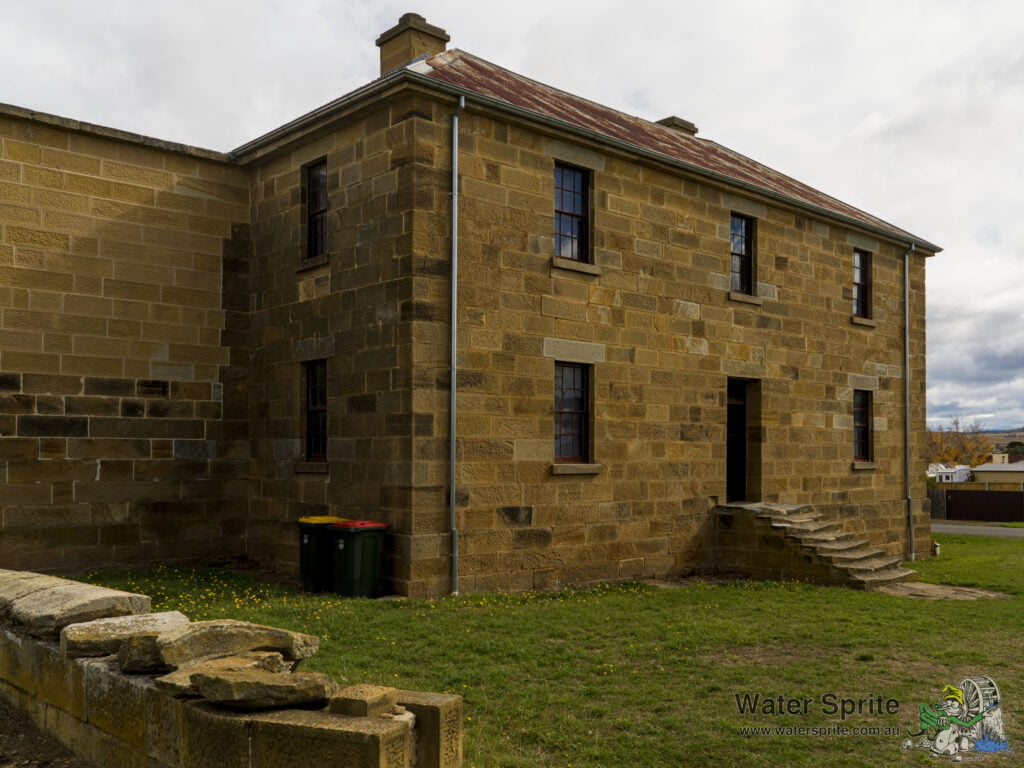
Sony A7Riv with Sony FE 24-70mm F2.8 GM II lens @ 29mm. 1/40s, f/16.0, 100 ISO.
In the 1950s, someone decided that the old gaol ruins would be an ideal location for the town swimming pool, creating what must have been one of the most unique swimming pools in Australia. A new town swimming pool opened in the early 2020s, and at the time of our visit, plans for the site were still under consideration. Over the years, several projects have aimed to restore other parts of the site for historical and tourist purposes, and there is hope that a development showcasing the site’s history will eventually come to fruition.
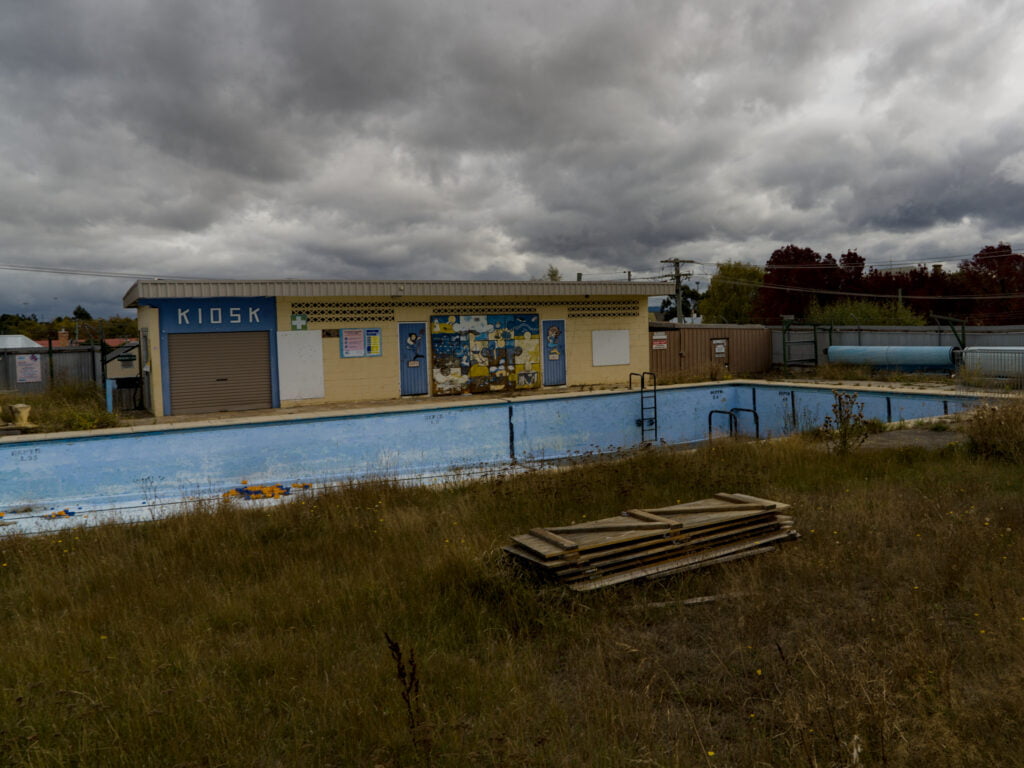
Sony A7Riv with Sony FE 24-70mm F2.8 GM II lens @ 24mm. 1/80s, f/16.0, 100 ISO.
Oatlands Supreme Court
The local police originally constructed the Oatlands Courthouse as a local court in 1829. Less than 10 years later, the building proved inadequate for the region’s needs, and officials requested upgrades. Instead of a simple enlargement, the government approved a fairly grand improvement. Then, in 1841, they further upgraded the courthouse to accommodate the Tasmanian Supreme Court, recognizing Oatlands as the “midlands capital.” The Supreme Court used the building until at least 1860.
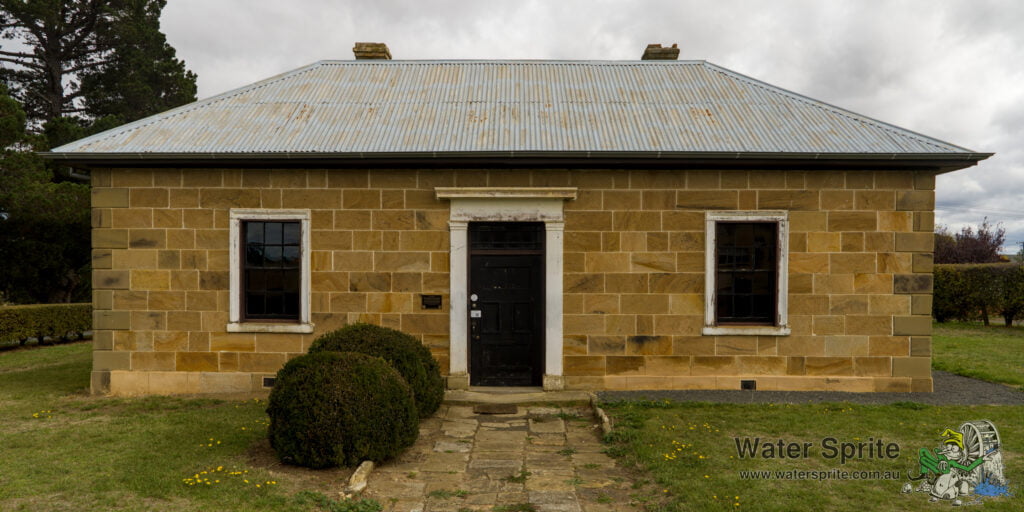
Sony A7Riv with Sony FE 24-70mm F2.8 GM II lens @ 24mm. 1/40s, f/16.0, 100 ISO.
From 1862, the court house was serving a dual purpose as the Oatlands Town Hall and Council Chambers, while still housing court sittings as required. It is not clear whether the Supreme Court still sat there, or whether it was just the local magistrates that continued to use the courtroom.
The building’s fortunes changed again in 1885, when the new Town Hall (with a new court room) was opened in 1885. Shortly after, it was sold into private ownership – first as a hall for the local Mechanic’s Institute, and then, in 1903, it became a family home.
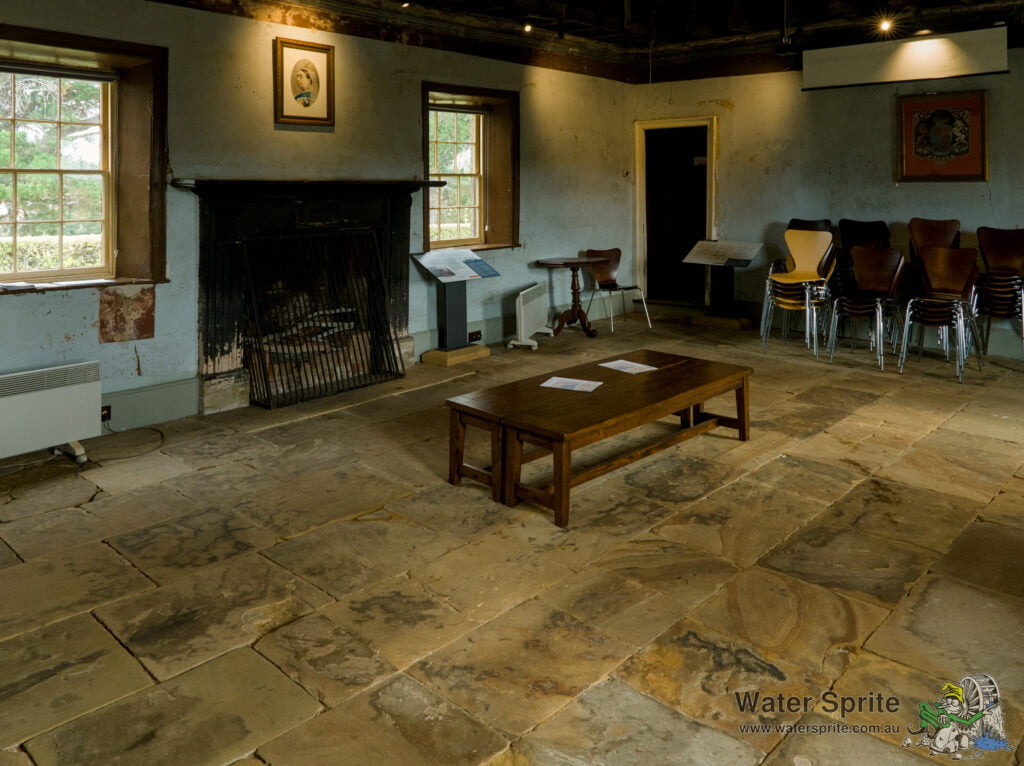
Sony A7Riv with Sony FE 24-70mm F2.8 GM II lens @ 24mm. 1/30s, f/16.0, 4000 ISO.
What’s there now
The building was gifted to the National Trust of Tasmania in 1977, and it was subsequently passed on to the Southern Midlands Council. It has been restored to something resembling how it looked during its days as the Supreme Court courthouse. There is a lot of interpretation signage in the various rooms of the building describing its different uses over the years and pointing out where you can see the signs of the different changes the building went through. Various artefacts found at the site, or typical of the types of things that would have been in use during the different stages of it’s life, are on display.
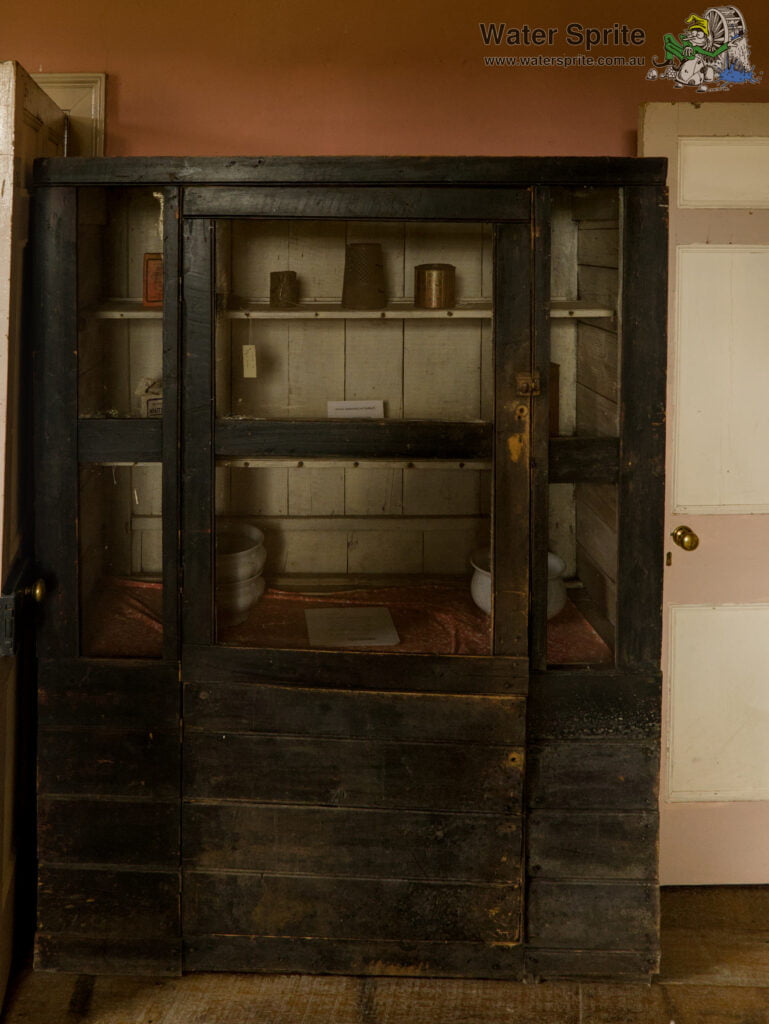
Sony A7Riv with Sony FE 24-70mm F2.8 GM II lens @ 24mm. 1/30s, f/16.0, 6400 ISO.
The information brochure for the site indicates that it can be used as an exhibition space, and the piles of stacked chairs in the courtroom show that people occasionally use it as a meeting place. If you are interested in using this building for an exhibition or another event, please contact the Southern Midlands Council for information.



Other Oatlands photos






Links
Wikipedia page on executions in Tasmania
Other references:
I acknowledge extensive reference to the various informational brochures available for the sites in the Military Precinct to supplement and refresh my memory of details.
Disclaimer
We attended the establishments and locations mentioned in this post as full fee-paying guests. Our hosts were not advised that we are semi-professional photographers or bloggers before or during our visit. It is our understanding that the tours and information we received were as normally provided to any member of the public.
The views expressed in this post are mine and mine alone, and any errors in it are also all mine. Any recommendations made in this post are unpaid and are based entirely on my experiences during my visit. Your experience may differ, and I cannot be responsible for that.
The cottages depicted in my photos are private properties. If you visit Oatlands and admire these and the other historic buildings in the town, please respect the privacy and other rights of the building occupants.
I am not aware of any restrictions on commercial photography at any of the sites mentioned in this post. I have no plans to put any of these photographs on my products at this stage. If you are interested in licencing a photo on this page, contact me for details. Out of courtesy for the organisations involved in preserving this history, a portion of any proceeds from any licence feels will be donated to the relevant supporting organisation to assist in the upkeep.
Leave a Reply